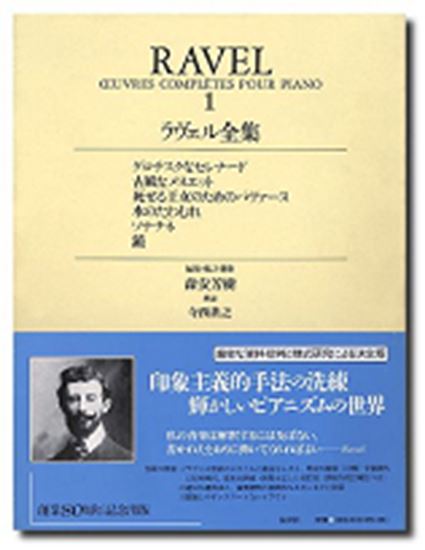Ravel, Maurice : Miroirs "Oiseaux tristes" es-moll
Work Overview
Genre:character pieces
Total Playing Time:4 min 00 sec
Copyright:Public Domain
Commentary (2)
Author : Tachi, Arisa
Last Updated: February 13, 2019
[Open]
Author : Tachi, Arisa
No. 2: "Sad Birds" (Oiseaux tristes)
Dedicated to Ricardo Viñes, who premiered the piece, this is the shortest of the five pieces, yet a work where tonal shifts are clearly suggested. It is in E-flat minor.The repeated B-flat notes that begin the piece transform in the next measure into a melancholic motif that clearly presents E-flat minor. In the following measure, the tonic E-flat is repeated, followed by the leading tone D-natural. However, this D-natural does not resolve to the tonic but instead combines with the dominant B-flat to form a motif, creating an unsettling atmosphere. Simultaneously, in the inner voices, a chromatic figure emerges, moving in units of three beats, defying the 4/4 time signature presented at the beginning (note that while the upper staff of the score begins in 4/4, the lower staff begins in 12/8), further stagnating the musical flow. In the uppermost voice, the repeated B-flat and E-flat notes continue to alternate, but in measure 10, E-flat transforms into its enharmonic equivalent, D-sharp, and the piece modulates to E major. In measure 13, the inner voices, which had been moving in eighth notes, double their speed to sixteenth notes, and the music suddenly bursts into motion. The music, which converges back to its original stagnant flow in measure 20, modulates to D minor via the C-sharp note contained within E major. Although it accelerates again in measure 25, there is no further significant increase in volume; instead, the music moves towards the coda, repeating the opening motif in the high register and at a soft dynamic.
Author : Tachi, Arisa
Last Updated: July 17, 2019
[Open]
Author : Tachi, Arisa
Dedicated to Ricardo Viñes, who premiered the work, this is the shortest of the five pieces, yet one in which tonal shifts are clearly suggested. It is in E-flat minor.
The repeated B-flat at the beginning of the piece transforms in the next measure into a melancholic motif that clearly presents E-flat minor. In the following measure, the tonic E-flat is repeated, followed by the leading tone D natural. However, this D natural does not resolve to the tonic but instead combines with the dominant B-flat to form a motif, creating an unsettling atmosphere. Simultaneously, in the inner voices, a chromatic figure emerges, moving in units of three beats, defying the 4/4 time signature presented at the outset (the upper staff begins in 4/4 time, while the lower staff begins in 12/8 time), further stagnating the musical flow. In the uppermost voice, repeated B-flats and E-flats continue to alternate, but in measure 10, E-flat transforms into its enharmonic equivalent, D-sharp, and the piece modulates to E major. In measure 13, the inner voices, which had been moving in eighth notes, double their speed to sixteenth notes, and the music suddenly bursts into motion. In measure 20, the music again converges to its original stagnant flow, modulating to D minor via the C-sharp present in E major. Although it accelerates again in measure 25, there is no further significant expansion in volume; instead, the music moves towards the coda, repeating the opening motif in the high register and at a soft dynamic.
PTNA & Partner Channel Videos(5items)
Sheet Music
Scores List (7)

(株)ヤマハミュージックエンタテインメントホールディングス

(株)音楽之友社

(株)ドレミ楽譜出版社

(株)全音楽譜出版社

(株)ドレミ楽譜出版社

(株)全音楽譜出版社

(株)春秋社






